What do peeling bananas and reading Chinese have in common? (and no, it's NOT a bad joke about slipping on banana skins)
How do you peel banana? Until a couple of months ago I did it like 99% of people - grab the top end, struggle for 20 seconds to snap & peel, struggle more, eventually bite it and get a horrible taste, and then finally peel it open. But now - after having a video emailed to me by a friend - I actually just pinch the
other end: the banana tip splits easily,and I peel it open. Just 2 seconds, without any nasty taste.
(By now I would have lost some of you, as you rush off to the kitchen to find a banana to experiment on. For those of you who are still reading, you're going to enjoy this ...)
To make this more relevant to reading and writing Chinese, I need to ask you: how do you visualise Chinese characters while you're learning new ones? Have you been using a method of visualisation that takes too long, and leaves you with a horrible taste in your mouth? Well, the focus of this post is to teach you to pinch on the other end. No mess no fuss.
Warnings
(If I had a lawyer, she'd want me to write this stuff)
Just to be clear I am using the Heisig method to learn the Chinese character system, so this post is specifically filled with tips & tricks to enhance the visualisation you use when learning characters through the Heisig system. You can of course apply these elsewhere.
Also, what you're learning here is the
learning to read and write Chinese. Once you're fluent, you won't need this anymore. Unless, for example, you see a character that you've forgotten, and you have to 'reconstruct' it in your mind.
These are my techniques, and you might have different preferences. That's OK - I'm just giving you ideas of what allowed me to get through 1000 characters in about 6 weeks. If you have different (or similar) ideas, please leave some comments to help all the people that I'm otherwise leading astray. Also, I use the Simplified character set, so if my numbering isn't the same as yours on the Traditional road, don't stress.
Depending your level of progress, I've made some comments at the end about next steps for you - but just get through the article in the meantime!
Finally, putting images into words might make things look messy. But it's not, so try not to get bogged down with the details. The more experience you have with Heisig, the easier this post will be to follow.
What is Heisig?
Many years ago, James Heisig wrote a series of books entitled "
Remembering the Kanji", which developed an excellent method of learning to read and write Japanese. The method is very effective, and it developed a bit of a cult following. (As much as you can get cult followings if you teach people to read & write Japanese.) It took until 2009 before this same method was developed into a complete system for Chinese characters.
If you've been following this blog, you'll know that I'm a big fan of the system, and continue to work through it. Here are affiliated links to his books for the
Simplified character set and the
Traditional character set.
- Basically, the writing system is developed by starting with the simplest of characters - each of which are allocated an 'image'. Usually the image matches the meaning of the word, but for abstract words, a 'better' image is used. For more advanced characters, these images are combined into stories.
- When you see a character, you mentally assemble the component images, which gives you the story - and thus the meaning of the word.
- Similarly, when you want to write a character, you think of the English word, the story pops into your mind, and you thereby assemble the images to produce the correct written character.
- (It's quicker & easier than it may appear :-)
This is my
original post when I began applying the Heisig method.
This is my most recent post, when I crossed
1000 characters.
And here is a link to
all related posts I've written.
Tips & Tricks (this is the stuff you'll actually use, so start paying attention)
With all these clarification done, here are some of the things I've realised in learning over 1000 characters through the Heisig approach so far. Application of these should greatly speed up you learning time and improve your recall.
Now it's time to let your imagination run wild:
胡思乱想
* Keep it simple
Try not to get carried away with additional components in your visualisations.
Let's start with an example, #100 乱 (chaos) is "tongue ... hook". If you've been paying attention, it's in the Chinese Proverb above. To make this easy to remember you
could imagine the following "someone grabbing & holding a person by the tongue, taking a fish-hook, embedding it, and seeing the person go wild as they break glasses and bump into people around the room, causing chaos". However, a simple alternative would be "someone causes chaos using their barbed tongue as it lashes out at people around them". (Heisig's recommendation is close to this.)
The problem with the first image is that in addition to the chaos, the tongue and the hook, you also have: hands, holding, people, glasses & breaking. So later, when you're trying to remember the character for 'chaos' - you might remember something about hands & glasses, and get confused about what the story is.
Another example is #114 尖 (tip) - where the image is something that goes from 小 small to 大 large. I have limited myself to the story 'a tip is something that starts small and gets big'. To be fair, though, after reading this character a few times, you don't need the story anymore - you automatically know it as 'tip'. The problem is if you try too hard to visualise the tip of a pen, or arrow, or pagoda - then you might find yourself thinking that 尖 means pen (or arrow or pagoda or ...). So keep it simple.
By having complex stories, you risk (a) forgetting parts of the story when trying to recall it, and (b) creating associations with items that aren't really part of the story. So use the minimum number of components you need to make it work.
As Einstein once said: "Things should be made as simple as possible, but no simpler."
* Pick just one meaning for primitivesMore options means more confusion.
Heisig has a bad habit (in my opinion). For example, for #60 页 (page), he says "As a primitive, this character will often take the unrelated meaning of a head."
The problem I found is that it slowed me down when trying to read a character which contained the 页 primitive. For example, consider #61 顽 and #82 项. Because I was predominantly using the 'head' meaning (as in 顽 which is "beginning head") - but I couldn't work out, when reading 项, what the associated keyword was with "I-beam ... head". Until I realised they used the image of a 'page' in this case - at which point the story came flooding back. If I had always used 'head', then this confusion would not have arisen.
I accept that for the first couple of hundred words it's not a big deal. But as the words continue to mount up in their hundreds, it certainly can get confusing. Just the other day I couldn't recall the meaning of 历 - because I was trying to imagine a 'factory' which is the keyword of 厂, rather than a 'cliff' which is the primitive image. Sigh.
With #12 日, the possible meanings given in the book are: sun, day, tongue wagging in the mouth. Trust me - just
pick one (I recommend 'sun') and stick with it. (And yes, I know there is a difference between 曰 and 日, but for visualisation purposes, it really doesn't matter.)
The benefit is that when I am reading, I don't look at 音 and think "standing ... tongue wagging" - and end up spending two minutes trying to remember that story. Then it turns out that not only did I use the 'sun' meaning (and not the 'wagging tongue'), I also used 'vase' (and not 'standing'). Arghhhhh!
Sure, I accept that sometimes the meaning isn't quite right. For example, it makes more sense to have a "wagging tongue" in the hanzi for 'sound', but let's face it - many of the visualisations are somewhat contrived, so at least choose contrivances that speed things up for you.
So 日 is always 'sun'. And 立 is always 'vase' (not standing up). 王 is always 'ball', etc. Always.
Pick just one image. Choose it by thinking (a) which will be easier to visualise, or (b) which is closer to the primitive's actual meaning, or (c) which one is used most in the words which follow in the next few pages.
I find this eliminates the uncertainty - which makes it quicker to memorise words, and much quicker to read words.
* Careful of primitves & keywords which are similar
This continues to bite me.
#513 蛇 has the keyword 'serpent'. #515 己 has the primitive image of a snake. Problem arises when I know that the keyword for 'begin' has a story of "walk ... snake" (I picture people about to begin a walk/race, and the start line is actually a snake) - but how on earth should I know whether it's snake that I'm visualising, or serpent? I don't care what the dictionary says, how does my mind work?
Make sure that you have a way of differentiating between snake & serpent that works for you. Perhaps a snake is white and a serpent is brown? Perhaps a snake is lying down, and a serpent has lifted its head to attack? BUT be careful that you don't add too much to the image, and thereby breach the "keep it simple" rule. If your 'snake' (nor 'serpent') is going to be white, for example, make sure you don't let it interfere with the character 白 for white.
In a
previous post, I pointed out how confusing it gets to have various 'hands' in your images - here is my exact wording: "If you allow me to mix up word meanings ('W') and primitive images ('P') for a moment, then note the following: 手 (W:hand), 扌 (P:finger), 开 (P:two hands), 乃 (P:fist), 及 (P:outstretched hands) .... arghhhhh!!"
In this case, it's essential that you take the time to work out exactly what each of the above should look like, so you don't confuse them.
Similarly, I already mentioned above that the keyword for 'factory' has a primitive meaning of 'cliff' - and Heisig's stories use both. I find that confusing, and prefer to limit myself to just one meaning.
So make sure when your creating images, that you are clear on what you mean - it will make the process much simpler to take in, and will dramatically increase your recall.
* For similar characters, use similar stories
If your mind thinks that way, then you should think that way too.
Look at characters #506-8: 她 she (woman ... scorpion), 地 ground (soil ... scorpion), 池 pond (water ... scorpion). Unfortunately, the stories that Heisig recommends aren't consistent, so when I tried to recall what the word was by looking at the character, I was failing. So I reworked the images to have the same framework. Let me explain ...
I picture XYZ (where XYZ is either a woman, soil, or water) totally covered by lots of little scorpions. And these then move and scuttle away to reveal something underneath ... perhaps 'she' is revealed, or the 'ground' becomes visible, or I see they are on the surface of a 'pond'. Because I use consistent images, I find my recall really quick, because I don't have to 'test' several images until one of them triggers the keyword.
For example, BadImage1 = 'scorpions are covered in soil, which then move off to reveal the ground underneath them', and BadImage2 = 'scorpions cover the water and you see they are on a pond'. In the first case the scorpions are doing the covering, in the second they are being covered. If you're not consistent, you're not going to come to the right image quickly enough - which is a waste of time.
Perhaps another example will add to your understanding.
In #479-81 we have 资 'assets', 姿 'looks', 咨 'consult with'. But the recommended stories are again not consistent, and are a bit of a jumble. I struggled to remember them. So I reworked the stories into the form "next ... XYZ". I could then easily remember that "next ... shell" was a guy collecting shells as assets, going 'next next next'. Similarly, "next ... woman" was a guy who was seeking the perfect-looking woman going 'next next next' on the basis of her looks. Finally, "next mouth" is someone going from person to person (mouth to mouth), looking for opinions, going through people 'next next next'.
With this consistency, the images are clear and need almost no interpretation - the keyword is obvious in each case.
Similarly, 赔 has a "clam used as a muzzle", while the next character is a "muzzle on the earth". I'm not saying you can't manage to cope with these differences - thousands have already. I'm just saying you can be more efficient. So why not!
* Abstract words
Some words are just difficult to visualise.
Heisig is aware of this, so often a word's keyword is changed for the purpose of making visualisation easier. So 白 means 'white', but he suggests you picture a 'dove'. 己 means 'self', but he suggests you use a 'snake'.
But there are many other words which are difficult to remember - and it's worth trying to find a consistent way which works.
For example, 安 means 'peace', but that's hard for me to image without putting flowers into the image - which would then interfere with images that use a 艹 radical. So I thought of "Peaceful Sleep" which is a mosquito repellant I used plenty as a child, which plugs into the wall. I tried not to break the first rule of keeping things simple, but so that it was still useful. So with 按 (finger ... peace) I picture a finger pressing on the Peaceful Sleep device. (I don't imagine it's hot to touch, or that it's being switched on - or anything else which might confuse the image).
Another one I had difficulty with was 忄 ('state of mind') - and I dealt with this by trying to construct images which suggested what the person's 'state of mind' might be in that case. With the word for 'slow' (慢) it was easy: "state of mind ... mandala". The latter reminds me (in the I-wasn't-born-yet kinda way) of the drugged-up bright-lights 1960s, and I can imagine someone in a chill room, with time really slooooowed down. Get what I mean?
* Touching primitives
If they're touching, then know they're touching (or avoid them touching).
I mentioned in
previous post about how the primitives are pieced together to make the character for 音. If you take those primitives literally, there is a line that goes missing. This works find when you're reading - you'll work it out. But when you're writing, you might get confused.
One example is: #677 会 which is "meeting ... rising cloud". This is made up of the triangle shape (including the horizonal base) plus 云. But you'll note that this results in a line-overlap, which is fine if you're reading, but if you following the instructions closely when writing you'll get an extra line. I've reconstructed 'meeting' as the 'umbrella' primitive and 'rising cloud'. Not only is the visualisation easier, but it works with no extra lines.
This doesn't happen often (so far), but it helped me to make sure my visualisations worked. And this might seem that it's overly complex, but I assure you ... it isn't. It's only because writing it out. If you were thinking this, it would only take a few seconds.
* Order your primitives
If you're smart with your story, it'll work much better.
What do you notice about the following pairs: 古/叶, 叮/可, 杏/呆, 未/末, 玉/主? Yup, they're almost the same, but not quite. For the early characters, it's not really a big deal - you should be able to remember the positioning of the primitives, and little confusion should result. But as you progress, and the characters become increasingly complex, you might correctly be able to remember the components, but be unable to piece them together in the right order.
For example, #661 派 is "water ... drag ... bandana", and #723 曼 is "sun ... net ... crotch", and 德 is "ten ... net ... one ... heart". My recommendation is that you create the story so that the order of how the pieces are put together is preserved. Over time this won't be necessary, but for fastest progress in the beginning,
it really helps.
So in the example of 曼 (drawn out), I picture the sun shining - from above - through a small net onto the crotch, and the net is being 'drawn out' as wide as possible to cover as much area as possible. The story implies the correct order. Try to get in that habit.
Similarly, for 蛇 ('insect ... it'), try to use the words in that order, and not the other way around. Don't worry - this very quickly becomes a habit.
Here are some other quick examples:
- 爱: somehow picture the 'birdhouse' on the 'friend' (not next to, not under) --> you'll be glad you did
- 香: try ensure that the sun is under the wild rice in the image (perhaps a reflection)
- 售: picture the turkey falling from above, and popping out the mouth at the bottom of the vending machine
- 设: can you see the words written on the side of the missile? the side? good
* Static vs Dynamic
Know how your own mind works.
In 设, as mentioned above, I see 'words' on the side of the 'missile'. This is a static image - just a snapshot.
But sometimes it helps me to have movement in the image. Take #763 (journey) for example - "wild rice ... submit". I had difficult doing this as a still image, but instead my mind showed someone walking down the road (on his journey), offering wild rice to peasants along the way, who are so grateful that they fall to their knees and submit to him, head bowed. It's a video that last a fraction of a second in my mind, but it tells me what I need. The movement helps convey the sense of 'journey'.
So experiment with your own mind. Do images work best? Or video? Decide for yourself. And use it.
* Make it Sexual
You know you want to.
For school children, I would say "make the images clear, colourful, vibrant, rich ...". But I'm going to say it as I see it - sexual images are more memorable, whether you're a fan or an opponent of sex. You'll remember the image - and that's the goal.
Heisig gives a clue about this in his definition of #633 又 ('again'), which uses the primitive image of 'crotch'. He says, "... by assigning it the meaning of crotch, as in the crotch of an arm or a tree. Or whatever."
"Or whatever", indeed.
So when 戏 (frolic) is "crotch ... fiesta", make it easy on yourself and create something that is memorable.
And the story for #838 ("use" - a verb, 使) is "person ... 100 Chinese inches ... mouth". If you have an image that words for you, fine. But I have an image I won't forget, and I'm sticking with it.
* Font curses
It's not you, it's the font. Honest.
There are a number of characters which appear sufficiently different in some computer fonts - that it's difficult to recognise the character. If you stick to Heisig's book, you're fine. But when you use flashcard software, or internet-base dictionaries, or online text - you might get confused.
查 - the bottom line is sometimes separate, sometimes connected
拐 - sometimes it appears as 'dao' below the mouth, sometimes it like like 'li'
直 - sometimes the line at the bottom also runs up the side
条 - sometimes it's a tree at the bottom, sometimes it's poles
派 - the inner bits sometimes touch, and sometimes not
房 - sometimes it's a line across the top, sometimes a little 'drop'
Over time, it won't make a difference, you'll still recognise them. But you may as well know they're coming.
Bringing it all together
I thought I would give one closing example which brings together a number of these components, and I've chosen #497 激 (excite).
- the primitives appear in this order: "water ... dove ... compass ... taskmaster"
- yet Heisig's story begins with the taskmaster, which I think makes it more difficult to remember
- I have very specific image for 'taskmaster' which I use in all related images
- he talks about 'white' foam, but I always use the 'dove' image so I don't get slowed down
- in the character, the 'dove' is on the 'compass', and in my imagination it is too
- I picture the water washing the dove-on-a compass towards the taskmaster, so the order is right and thus easy to write
- the closer it comes the more excited the taskmaster gets
Your image may work better for you, and if so then definitely stick to it. But I found this type of thinking (consistent images, useful ordering, etc.) has allowed me to remember images quicker & more easily, with better recall. This includes going from character to keyword, or keyword to character.
So now what?
You can do whatever you want, from ignoring this post, leaving rude comments below - or using it, integrating it into your studies, and improving it. But here are some suggestions ....
- If you're just beginning, keep these things in mind as you set off on your studies. Maybe come back to it every now and then, and see if you're "on track", and leave some comments each time you spot an improvement. Heisig suggest stories for you in the beginning, and it's probably best not to deviate too far from that until you've got some momentum and some experience.
- If you're a few hundred characters in, you should be able to immediately start putting these ideas into practice as you move forwards. There are still lots of characters to play with, and get right the first time!
- I'm not suggesting that you go back and change your existing stories. If they're working for you, then stick with them. However, if there are certain characters, or groups of characters, which you keep forgetting, then see whether these techniques will help you 'tighten up your game", and get them right from now on.
And
read some of my previous posts on the Heisig method. I've made observations of things that go well and things that go badly - you' definitely get some more clues from there. All such posts use the RTH-hesig keyword.
To make sure you get updates and new tips & tricks, don't forget to
subscribe to Mandarin Segments, using
RSS/XML,
email, or
other. You can also follow me on
Twitter.
And of course,
leave some comments to help me and other readers with your insight. Are there characters that you always get wrong? Are there other tricks I've forgotten to mention? Do you think I'm talking a load of shit? All views are welcome.
And now we've come full circle. If you're still still peeling bananas the old way, there is a much better alternative. And if you're still learning to read & write Chinese (or Japanese) for that matter, this is definitely a better way.
 Firstly, I'd like to thank all the readers of Mandarin Segments for their support during the year. Blogging is fun, but really connecting with you all has been fantastic! I appreciate the time you take to read my posts, but I especially appreciate the time you take to leave comments, to disagree, and to engage me. 非常感谢!
Firstly, I'd like to thank all the readers of Mandarin Segments for their support during the year. Blogging is fun, but really connecting with you all has been fantastic! I appreciate the time you take to read my posts, but I especially appreciate the time you take to leave comments, to disagree, and to engage me. 非常感谢!






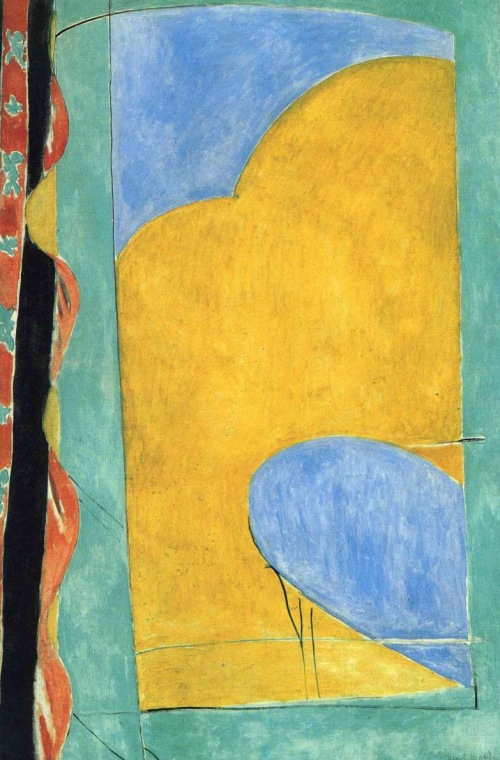
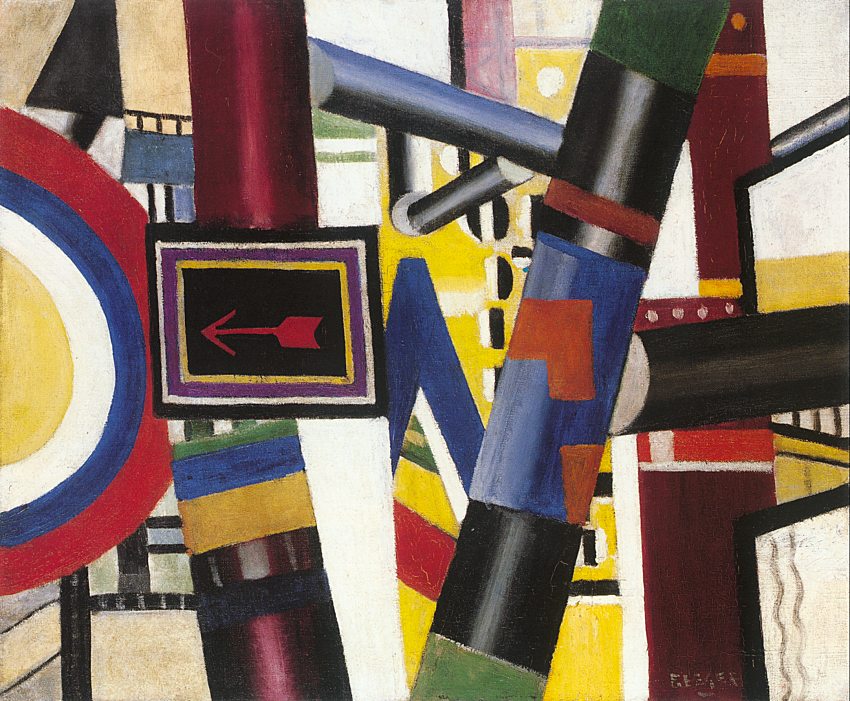


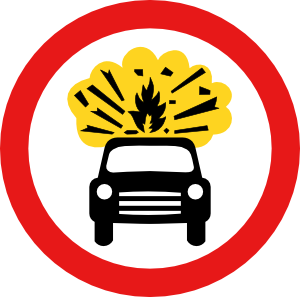
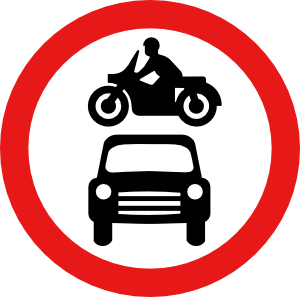
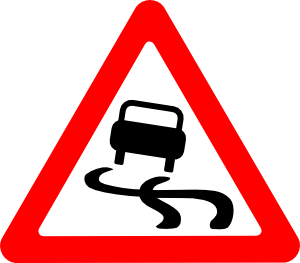














 iGoogle collection of "Learn Chinese" feeds
iGoogle collection of "Learn Chinese" feeds